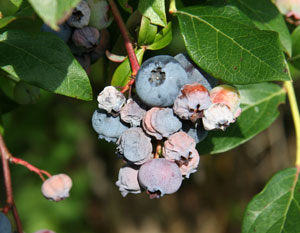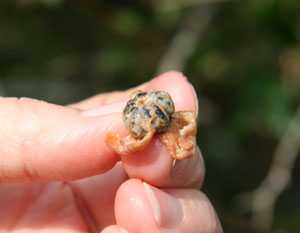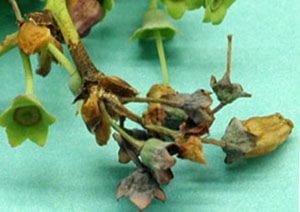Common causes:
Drought
Blueberries do not wilt as readily as many other plants. Berries will shrivel and drop before leaves die.
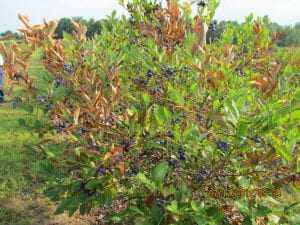
Frost Injury
Frost injury causes fruit to have a dark, shrunken appearance that readily distinguishes them from unaffected fruit. Severely damaged fruit appear hollow when cut in half. Frost or freeze injured fruit may drop to the ground prematurely before harvest.
View pictures (Mississippi State University).
Anthracnose fruit rot
Anthracnose fruit rot is caused by the fungus Colletotrichum gloeosporioides. Blossom and twig infections also occur. Spores from these early infections may be rain splashed onto developing fruit.
Fruit Infections may occur from bloom to fruit ripening. This fungus causes the berries to “leak” and have a shrunken appearance, especially near the blossom end of the fruit.
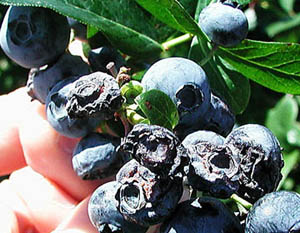
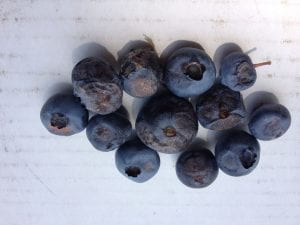
Later, an orange or pink slime develops on the berry surface.
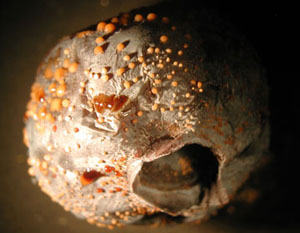
Alternaria fruit rot
Alternaria fruit rot causes black or dark moldy growth on the blossom end of the berry. Berries later shrivel and darken.
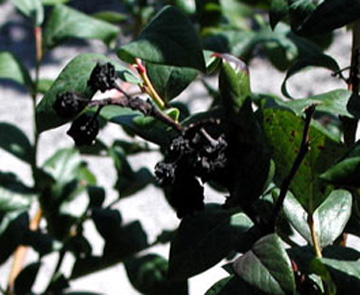
Mummy berry
Mummy berry infected fruits shrivel and turn pink. They are inedible. Mummified fruit drop to the ground prematurely. These overwinter to cause primary leaf infections the following spring.

